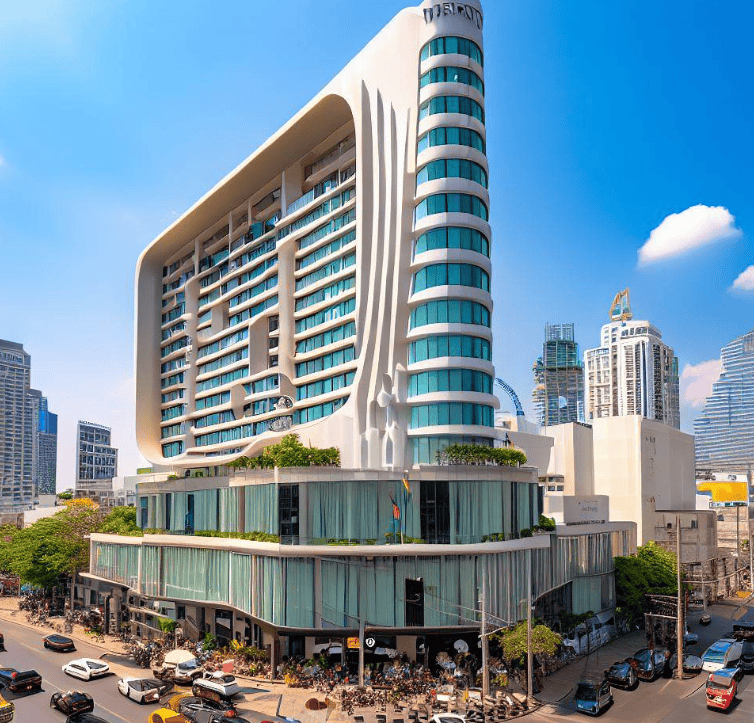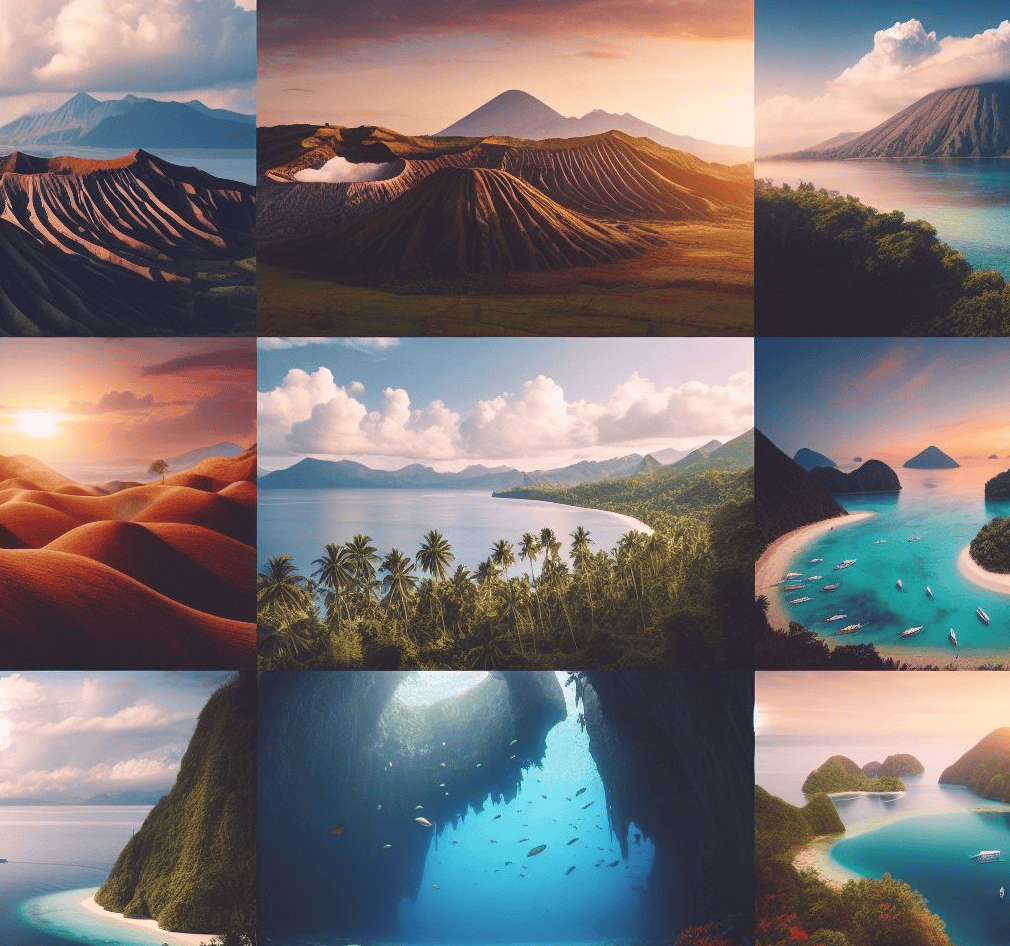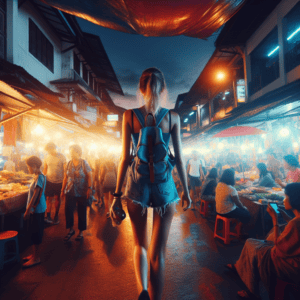
Vietnam is a country of stunning landscapes, rich culture, and diverse experiences. From Hanoi’s bustling streets to Ha Long Bay’s serene beauty, the country offers something for every traveler. However, to truly enjoy all that Vietnam has to offer, you should plan your visit at the right time.
Understanding Vietnam’s weather patterns can help you decide when to explore its various regions. Whether you’re interested in soaking up the sun on a sandy beach, trekking through lush mountains, or immersing yourself in local festivals, choosing the right season will enhance your experience.
In this guide, we’ll explore the best times to visit different parts of Vietnam, highlight key events and festivals, and provide tips for making the most of your trip. By the end, you’ll have a clear idea of when to plan your journey to ensure an unforgettable adventure in Vietnam.
Understanding Vietnam’s Climate
Overview of Vietnam’s Weather
Vietnam stretches over several climate zones, which results in varied weather patterns from north to south. The north experiences a cold winter and hot summer seasons, while the south enjoys a more tropical climate with year-round warmth. Central Vietnam serves as a transition zone with elements of both. This geographical variety means you’ll need to consider carefully what each region offers weather-wise during your planning.
Climate Zones: North, Central, and South
In the northern part of Vietnam, winter (from November to April) brings cooler temperatures especially evident in mountainous areas like Sapa, where you might even encounter snow. Summers (from May to October) are typically hot and humid with considerable rainfall, which can affect travel plans, especially in August and September during the peak typhoon season.
Central Vietnam presents a somewhat different story. Here, the weather divides into a wet season from September to December and a dry season from January to August. Notably, the coastal city of Hoi An and the imperial capital of Hue often face significant flooding in October and November, making these months less ideal for visits.
The southern region, including Ho Chi Minh City and the Mekong Delta, remains warm year-round with two main seasons: wet and dry. The wet season spans from May to November and is known for brief but heavy showers which can suddenly occur mainly in the afternoon. However, travel is still very much possible and enjoyable during this time with lush landscapes and vibrant city life.
Monthly Weather Breakdown
January to March
During these first months of the year, North Vietnam is in the tail end of its winter season, providing a cool and dry atmosphere, which is quite comfortable for exploring the northern regions, including Hanoi and the picturesque terraces of Sapa. This period is particularly appealing for those who wish to experience the vibrant Tet Festival, Vietnam’s Lunar New Year celebration, which offers a deep dive into the local culture.
Central Vietnam experiences its coolest and driest weather, ideal for visiting historical sites in Hue and the charming town of Hoi An. The pleasant climate makes it perfect for long days spent outdoors, exploring ancient architecture and enjoying the serene beaches without the oppressive heat that arrives later in the year.
In the South, the weather remains dry and warm, making it an excellent time for beach enthusiasts and urban explorers in Ho Chi Minh City. Visit the lush Mekong Delta during this season to see it at its most lively, as the dry weather leads to bustling market activity and vibrant local life.
April to June
As the heat starts ramping up, North Vietnam enters its summer season with rising temperatures and humidity. This time is excellent for trekking ventures in northern highlands as the landscapes begin to burst with lush greenery after the cold winter. However, visitors should prepare for occasional rain showers that can cool things down unexpectedly.
In Central Vietnam, temperatures continue to climb, making early morning or late evening the best times for exploring. By June, the region begins its gradual shift towards the rainy season; however, the early part of this period still remains largely dry, providing a good window for visits to coastal areas like Da Nang.
The southern part of the country is now approaching the onset of the wet season. Despite this, the rain typically comes in short bursts and rarely disrupts travel plans significantly. It’s a great time to witness the southern cities at their most dynamic, as the approaching rains bring cooler air and lush landscapes.

July to September
This period marks the peak of the rainy season in most of Vietnam. The north now sees frequent downpours, which can add a mystical allure to the landscapes but may disrupt travel, particularly in rural areas. Hanoi experiences high humidity and heat, but the showers generally bring relief during the hottest parts of the day.
Central Vietnam reaches the height of its rainy season by September, with significant chances of typhoons, especially in coastal areas. Despite this, there are still many sunny days, and the region’s renowned beaches typically remain popular among visitors who take advantage of the less crowded attractions.
In the south, the rain becomes more regular, cooling the environment and enhancing the scenic beauty of places like the Mekong Delta, where the rivers swell and the greenery thicklivens. It’s an ideal time for photography enthusiasts and nature lovers to capture the vivid contrasts of bustling city life against the tranquil countryside.
October to December
As the year begins to close, the weather cools and dries out across Vietnam, making these months among the most comfortable for travel. In the north, autumn transitions into early winter by December, with cooler temperatures and reduced humidity, ideal for exploring urban centers and rural outskirts alike.
Central Vietnam starts to see a decrease in rainfall from October, with conditions improving significantly by December. It’s an excellent time for visiting the historical sites without the intense crowds of peak tourist season, and the temperate weather makes extended outdoor excursions more pleasant.
The southern regions begin drying out, and cooler temperatures make urban exploration in Ho Chi Minh City particularly enjoyable. The water levels in the Mekong Delta recede, making the region more accessible for exploration and offering unique insights into the local way of life that revolves around this mighty river.
General Weather Patterns
| Month | North Vietnam | Central Vietnam | South Vietnam |
|---|---|---|---|
| Jan-Mar | Chilly and dry | Cool and dry | Warm and dry |
| Apr-Jun | Warm and humid | Hot and dry | Very hot and humid |
| Jul-Sep | Hot and rainy | Hot and rainy | Wet, frequent showers |
| Oct-Dec | Cool and dry | Wet and stormy | Cool and dry |
These patterns are crucial for planning your visit as they significantly influence what you can do and see. Whether you’re hoping to enjoy a street food tour in Hanoi during the cooler, dry months or explore the vibrant floating markets in the Mekong Delta during the lush, wet season, timing your visit correctly ensures a more enjoyable and fulfilling experience. Similarly, photographers and nature lovers should consider the specific months when landscapes and natural lighting are most favorable for their interests.
Best Times for Specific Activities
Beach Holidays
For sun-seekers and ocean lovers, the coastal lines of Vietnam offer majestic views and splendid relaxation opportunities. The best months to enjoy the beaches are from April to early October when the weather is typically sunny and warm, particularly in the southern and central parts of the country. During these months, the sea remains calm, providing excellent conditions for swimming, snorkeling, and other water sports.
| Beach Destination | Optimal Months | Activities |
|---|---|---|
| Nha Trang | April to August | Snorkeling, diving, beach lounging |
| Da Nang | May to September | Surfing, cultural festivals |
| Phu Quoc | November to March | Fishing, sunset viewing |
Visiting these spots during these months not only ensures the best weather but also the chance to participate in local festivals. For example, Da Nang hosts its famous International Fireworks Festival typically around June, turning beach visits into vibrant, colorful experiences.
Cultural Exploration
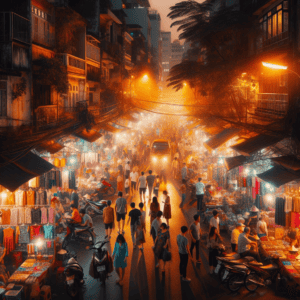
Vietnam’s rich tapestry of history and culture comes alive particularly during festival times. The Lunar New Year, known locally as Tet, usually occurs between late January and mid-February and is perhaps the grandest celebration across the country, deeply immersing visitors in local traditions and joyous festivities.
During these cultural events, you can experience Vietnam’s unique customs, from dragon boat races in the Perfume River during the Hue Festival to the colorful lantern displays and street dances during the Mid-Autumn Festival.
These events provide a deeper understanding of the local ethos and historical lineage, enriching your travel experience significantly.
Adventure Travel
Vietnam’s diverse landscapes make it an ideal playground for adventure seekers. From trekking in the northern mountains of Sapa to exploring the vast caves of Phong Nha in central Vietnam, the country offers countless opportunities for those looking to add some adrenaline to their travels.
| Adventure Activity | Optimal Months | Location |
|---|---|---|
| Trekking | March to May | Sapa |
| Cave Exploration | February to April | Phong Nha |
The optimal times to engage in these activities are when the weather is most accommodating. For trekking in Sapa, March to May offers cool and dry weather, making the rugged paths more accessible and the scenery exceptionally lush. Cave explorations in Phong Nha are best from February to April when water levels are lower, allowing deeper access into these extraordinary geological formations.
Each of these activities not only promises thrilling physical experiences but also unique opportunities to connect with nature and local traditions, making your travel experience deeply memorable.
Avoiding the Crowds
Off-Peak Travel Benefits
Traveling during the off-peak seasons not only helps you avoid the hustle and bustle but also offers a unique perspective on Vietnam’s authentic charm. From May to September, while many tourists steer clear due to the rainy season, this time provides lush landscapes and the chance to see Vietnam in a more local light without the crowds.
| Season | Benefits | Considerations |
|---|---|---|
| Wet Season | Lower costs, fewer tourists | Occasional rain showers, lush landscapes |
| Late Autumn | Cool weather, minimal tourists | Cooler northern regions |
During these months, not only do accommodation rates tend to be lower, but you’ll also enjoy more personal interactions with locals and deeper cultural immersion. The streets and popular tourist sites like Hanoi’s Old Quarter or Ho Chi Minh City’s War Remnants Museum are less crowded, allowing for a more relaxed exploration.
Hidden Gems to Explore
Exploring less-touristed areas can lead to some of the most memorable experiences. For instance, instead of the popular Ha Long Bay, consider a visit to Bai Tu Long Bay, which offers similar breathtaking scenery but with fewer boats and untouched natural beauty.
| Destination | Experience |
|---|---|
| Bai Tu Long Bay | Quiet, scenic cruising |
| Ha Giang | Remote mountain landscapes, tribal culture |
| Con Dao Islands | Pristine beaches, historic sites |
Venturing into the northern mountains like Ha Giang not only avoids the mainstream tourist paths but also opens up vistas of terraced rice fields and opportunities to interact with diverse ethnic communities in their traditional environments. Similarly, the Con Dao Islands offer a serene escape with beautiful beaches and a rich history as a former prison island.
Eco-conscious Travel
Choosing to travel during less busy times and to less frequented destinations also supports sustainable tourism practices. This approach reduces pressure on often-visited sites, helping preserve Vietnam’s stunning natural environments and historical sites for future generations.
Traveling during these periods and to these places allows you the space to appreciate the tranquility and beauty of Vietnam at your own pace. It also gives you a chance to contribute positively to the local economy, engaging with artisans, guides, and small businesses that might not see as much activity during peak tourist seasons. Such travel not carry on the excitement of discovery but also supports ethical travel practices, aligning your adventure with globally conscious tourism trends.
Travel Tips for Each Season
Spring Travel Tips
Spring in Vietnam, spanning from February to April, is marked by a delightful climate that is well-suited for exploring both the country’s vibrant cities and its stunning natural landscapes. During this period, the northern part of Vietnam gradually warms up, while the southern region enjoys its last few months of dry weather.
| Season | Travel Tip | Why It’s Important |
|---|---|---|
| Spring | Pack light layers | Weather varies, especially in the North |
| Bring allergy medication | Flower pollen is high in many areas |
It’s a good time to visit the flowering peach and plum orchards in the north, especially in and around Hanoi and Sapa. For those susceptible to allergies, it is advisable to carry allergy medication as the blooming flora can trigger reactions. Light layering is also essential as days can be warm while evenings may still carry a chill, particularly in northern regions.
Summer Travel Tips
The summer months, from May to August, feature hot and humid conditions, with occasional heavy rains. Preparation for the heat and potential brief yet intense downpours is key to ensuring a comfortable trip.
| Season | Travel Tip | Why It’s Important |
|---|---|---|
| Summer | Hydration and sunscreen | Protect against heat and UV exposure |
| Waterproof gear for electronics | Sudden rains can soak through |
Activities during the hotter part of the day should be minimized to avoid heat exhaustion; exploring in the early morning or later in the evening is preferred. Carrying waterproof bags or cases for electronics is also vital because of the frequent rain showers during summer. Moreover, visiting coastal regions can provide a cooling respite from the inland heat, with beach destinations like Nha Trang being ideal for water activities that offer a break from the temperature.
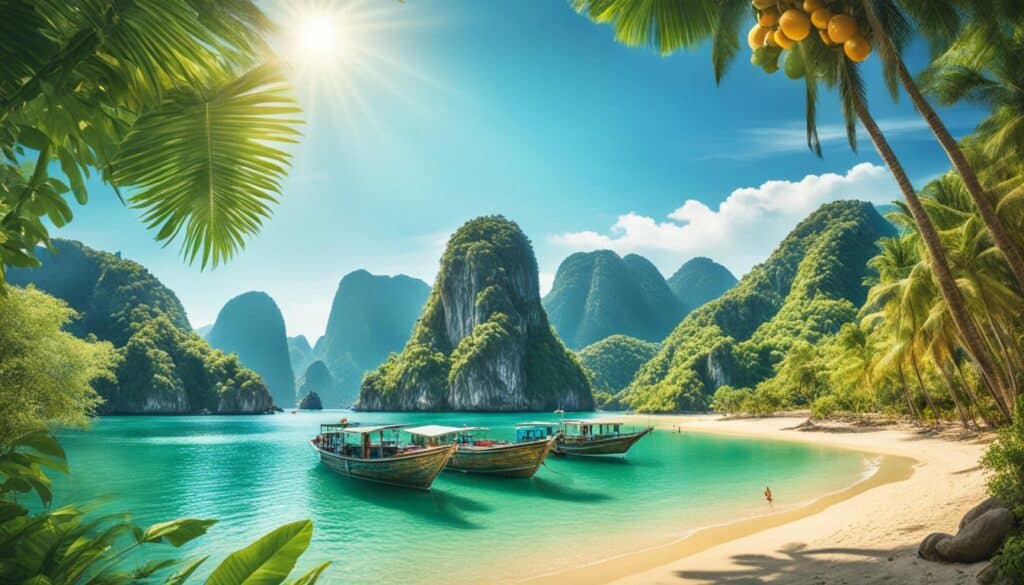
Autumn Travel Tips
In autumn, particularly from September to November, Vietnam wears its most picturesque hues, especially in the northern regions where the changing foliage presents a spectacular display of colors.
| Season | Travel Tip | Why It’s Important |
|---|---|---|
| Autumn | Warm clothing for late autumn | Cooler temperatures especially at night |
| Try seasonal cuisine | Enjoy fresh harvests unique to this time |
This is the perfect time to visit terraced rice fields in the northern highlands as they turn a golden yellow, offering ideal photo opportunities. Culinary enthusiasts should not miss the chance to try new harvests, including specialties like young rice (com) in Hanoi. As chilly breezes start setting in by late autumn, carrying some warm clothing is advisable, especially for evening outings.
Winter Travel Tips
Winter, occurring from December to February, brings cooler temperatures across the country, with the north experiencing cold weather. This season is ideal for those who prefer less heat while exploring urban centers or engaging in outdoor activities in central and southern Vietnam.
| Season | Travel Tip | Why It’s Important |
|---|---|---|
| Winter | Warm clothing for the north | Temperatures can be significantly low |
| Enjoy local festivals | Rich cultural experiences available |
Staying warm is crucial, particularly in northern Vietnam, where temperatures can drop significantly. Visiting destinations like the Central Highlands or Dalat during this time allows for enjoyment of cooler weather while exploring coffee plantations and participating in local ethnic festivals, offering a deeper cultural immersion into the lives of the local communities. Winter festivals, such as the Lunar New Year celebrations, present an excellent opportunity for travelers to experience Vietnam’s rich traditions and hospitality.
Planning and Booking Your Trip
When to Book Flights
Timing your flight bookings can significantly impact the cost of your trip to Vietnam. Generally, booking several months in advance is advisable to secure the best rates, particularly if you plan to visit during the peak tourist seasons like the Tet holiday period or summer months.
| Timeframe Before Trip | Expected Benefit |
|---|---|
| 3-6 months | Lower prices, more options |
| 1-2 months | Moderate prices |
| Less than 1 month | Higher prices, fewer options |
Secure your tickets as early as possible during peak seasons to avoid last-minute price hikes. Conversely, if you’re planning a trip during the off-peak season, you might find good deals closer to your departure date. Keeping an eye on promotions and deals from major airlines that operate in Vietnam like Vietnam Airlines, VietJet Air, and Bamboo Airways can also help you snag a bargain.
Choosing Accommodations
Selecting where to stay can greatly influence your overall travel experience. Vietnam offers a variety of accommodations ranging from luxury resorts to budget hostels. Each region offers unique options that cater to different tastes and budgets.
| Accommodation Type | Ideal For | Typical Locations |
|---|---|---|
| Luxury Resorts | Comfort, high-end services | Da Nang, Nha Trang |
| Boutique Hotels | Personalized service | Hanoi, Ho Chi Minh City |
| Hostels and Guesthouses | Budget travelers | Nationwide |
Consider the location and the accessibility of tourist attractions when choosing your accommodation. Places like Hanoi and Ho Chi Bi Minh City provide easy access to cultural sites and nightlife, while areas like Phu Quoc and Da Nang are better suited for those looking for beachside relaxation. Reading recent reviews and ratings can provide insights into the quality of the facilities and the level of service at these establishments.
Travel Insurance Considerations
Travel insurance is an essential component of planning a safe trip. Not only does it provide coverage for unforeseen medical expenses, but it can also offer compensation for travel-related issues like lost luggage or trip cancellations.
| Insurance Coverage | Benefits |
|---|---|
| Medical | Doctor visits, emergency treatment |
| Trip Cancellation | Reimbursement for pre-paid, non-refundable costs |
| Baggage | Compensation for lost or stolen items |
Choose a policy that best fits the nature of your trip. If you plan to engage in adventure sports like motorbiking or scuba diving, ensure your insurance covers such activities. Always read the fine print and understand the specifics of your policy coverage to avoid any surprises. Additionally, it can be helpful to consult with travel forums or read reviews to see what other travelers recommend for insurance options while traveling in Vietnam.
Before You Go
Remember to plan your travel dates based on what you most want to experience, be it cultural festivities, adventure sports, or simply relaxing on a beach. Booking flights and accommodations early can save you money and stress, especially during peak tourist seasons. Also, don’t forget the importance of travel insurance to protect against any unexpected events.
Finally, embracing the less-visited paths and traveling during off-peak times not only offers a unique perspective and richer interactions with locals but also contributes to sustainable tourism, helping preserve the beautiful destinations in Vietnam for future generations.
Helpful Reads
- https://www.intrepidtravel.com/us/vietnam/best-time-to-visit-vietnam
- https://www.audleytravel.com/us/vietnam/best-time-to-visit
- https://www.travelandleisure.com/best-times-to-visit-vietnam-8546761

Anne Thomas is a resourceful freelance writer with a passion for history and a knack for uncovering hidden gems on her global journeys. She roams the globe in search of untold stories and historical treasures without breaking the bank.
When she’s not deciphering ancient scripts or exploring archaeological sites, you can find her in a cozy library with a cup of tea, diving into old books and manuscripts from different eras.
